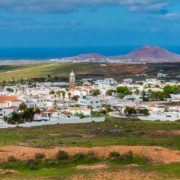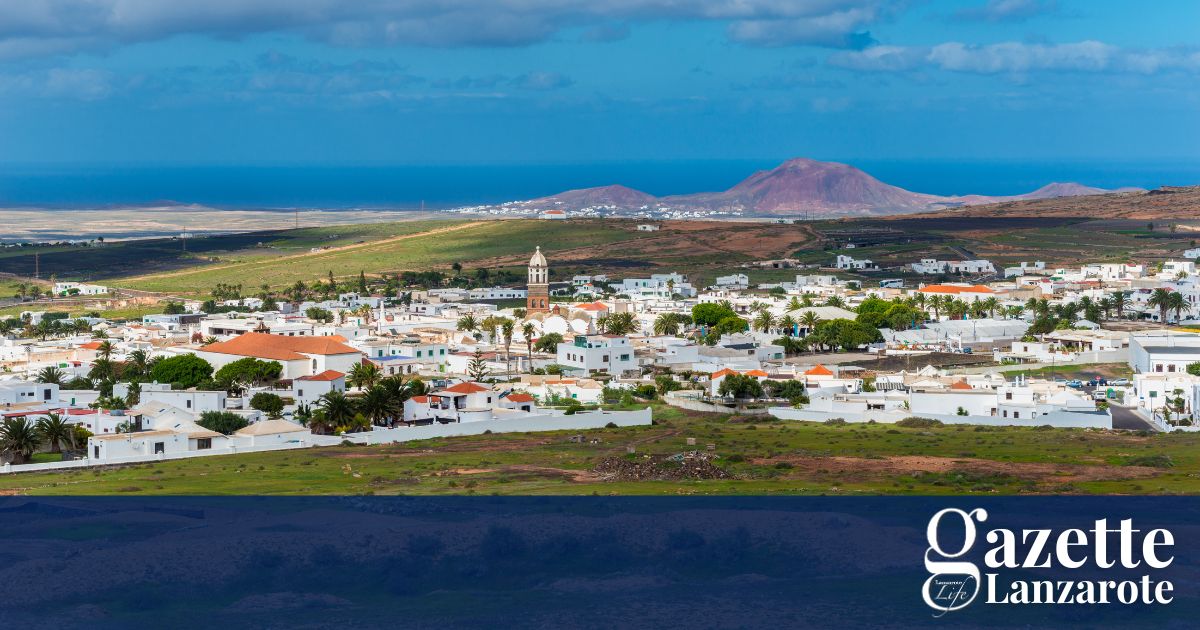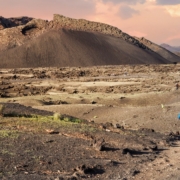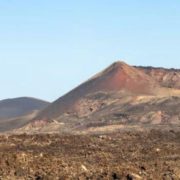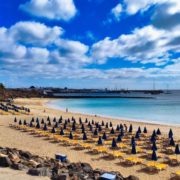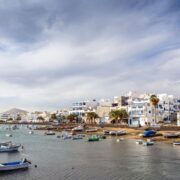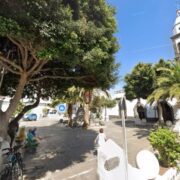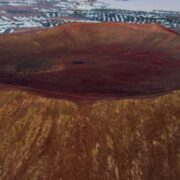Tour guide David Penney takes us on an easy stroll through the history of Lanzarote’s ancient capital, Teguise.
We start the walk at the Cepsa gasolinera (petrol station) on the LZ30 just outside of Teguise, the old capital of Lanzarote.
There are a few other options to start this walk, but I have chosen this one because it offers the simplest route, without too many confusing turns. Also, there is usually plenty of parking at the side of the gasolinera, unless you come on market day.
The minor road immediately opposite the gasolinera is called the Avenida de las Amapolas, and you’ll need to continue along it until the end, bearing right and carrying on as it crosses Calle Malvarosa and turns into a dirt track.
Within a few minutes of walking, you will see a signpost indicating no vehicles permitted unless they belong to residents. Take the dirt track to the right of the signpost heading over towards some structures built out of volcanic rock.
Walk past the big circular aljibe (water tank) on your left, then cut up towards the first big structure. You are now in front of one of a series of renovated lime kilns, known as caleros.
Before cement was introduced to Lanzarote, these kilns were vital for construction on Lanzarote. The lime was used to seal the volcanic rock and earth walls which then made them wind and watertight. Lime also provided the whitewash that has become one of the symbols of identity of this island, and, as a key element in soap production, it was also an important export for the island.
Lime was created by burning the barrilla (glasswort) that is still found all over the island. Once eagerly harvested, dried, and burnt by locals, it now grows undisturbed – long replaced by industrial chemicals.
Over the years when I have been exploring off the beaten track, I often discover similar lime kilns in rural areas. Some are abandoned but others have been renovated. The name of the marina Puerto Calero reflects this trade. José Calero, who built the resort, was a constructor, but his name shows that his ancestors made their living from lime.
There is an entrance in front of the kiln which is how workers accessed it to heat the lime, and if you walk round the right of the kiln to the back you will see some steps which lead up to the top of the chimney (not advisable if you fear heights, or it is a windy day).
After exploring the other two kilns nearby and taking several photos, we started to head back. As you are walking back on the dirt track look over to the right and you will see a quaint little old church nestling on the hillside. The name of this tiny church is Ermita de San Rafael, which takes its name from the hill in which it sits.
The ancient settlement here was founded by Maciot de Bethencort in 1418. The second Norman ruler of the island following the conquest by his uncle Jean de Bethencort in 1402, Maciot is said to have married the Princess Teguise, and established the town she gave her name to as the island’s capital.
The existence of this simple little church has been documented since 1674 and was attended by the local farmers in the nearby area.
We re-join the track and make our way back to the cars.
WALK INFORMATION
This is a linear 6km walk which should take you 90-120 minutes to complete. The terrain is easy and non-challenging.
You can take the number(s) 07, 33 and 51 buses to get to Teguise if you don’t want to use your car.

